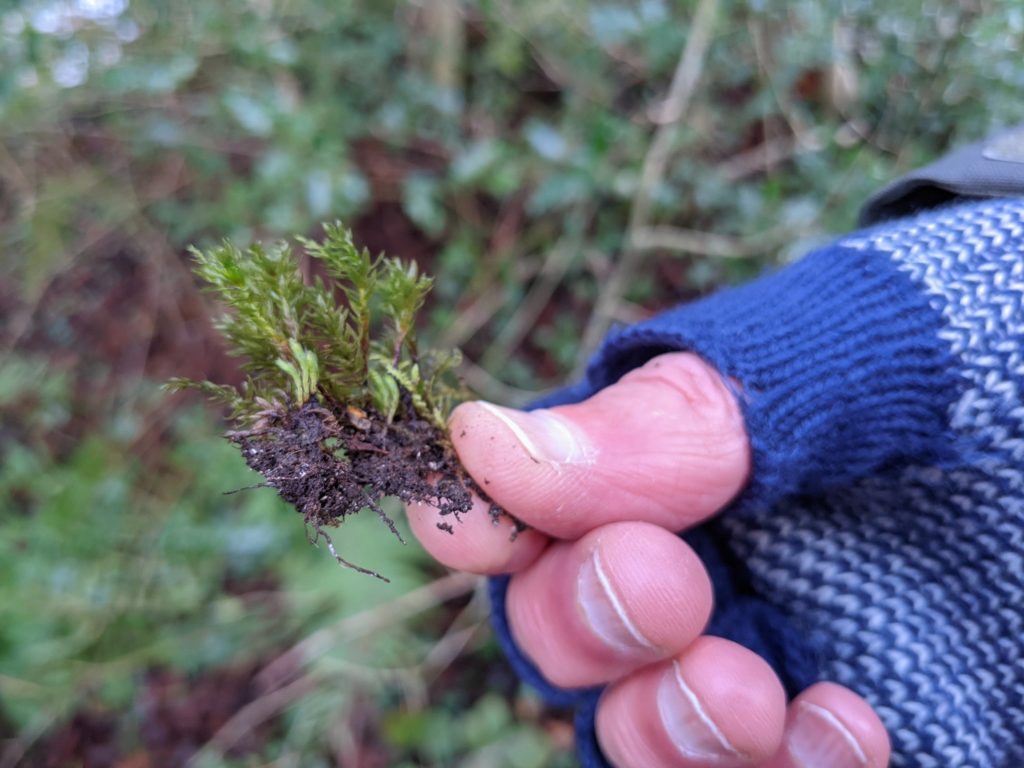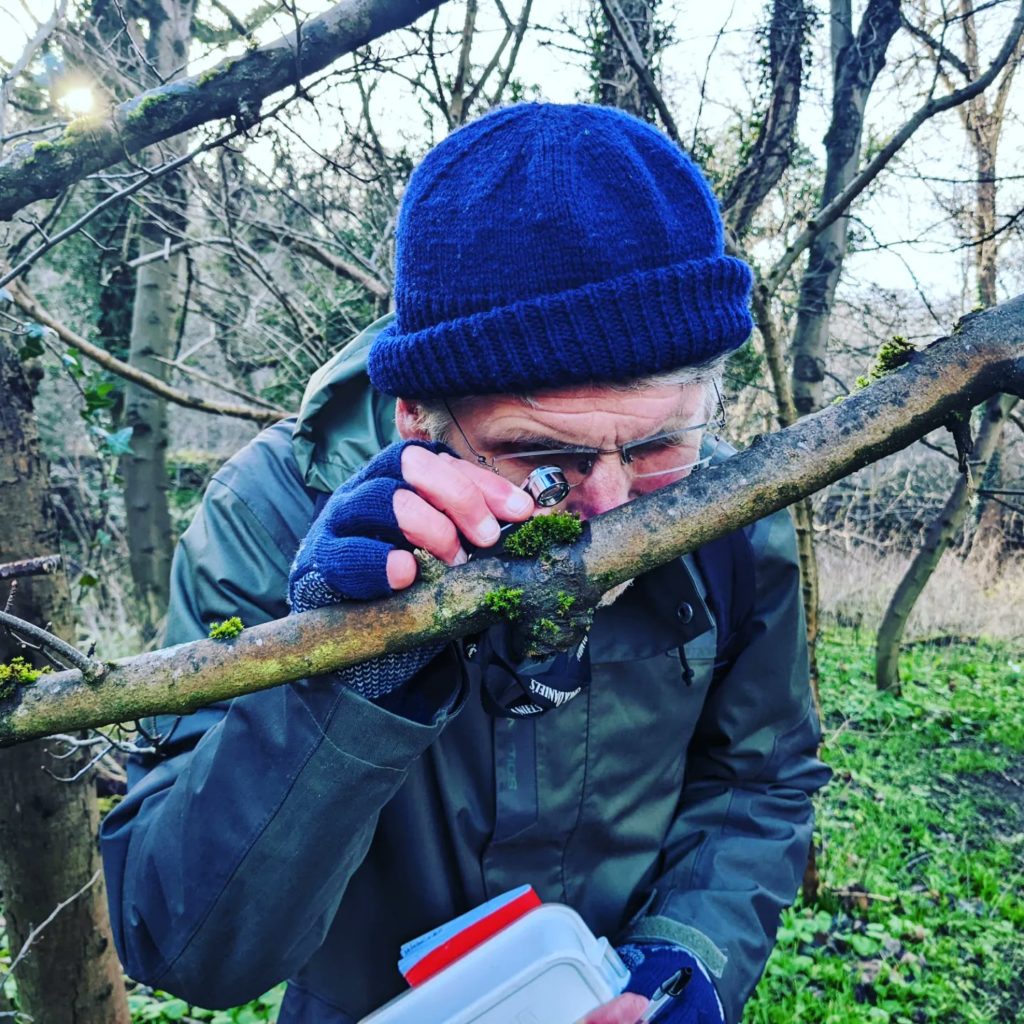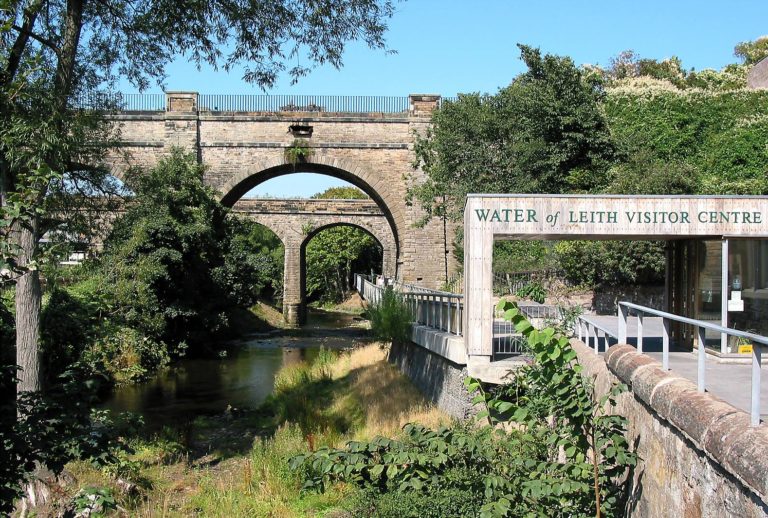The Volunteer Survey Team had a great opportunity to work with David Adamson from Edinburgh Natural History Society who helped us to identify mosses that we would most likely expect within our Giant Hogweed Quadrats.
In late April we are going to start year 5 of a survey project where we look at alternatives to the use of herbicide for the control of Giant Hogweed. We survey 47 four by four-meter quadrats before and after three different treatments to see the long-term effects of each treatment on all plant and bryophyte species.
On a short walk around 15 test plots in Craiglockhart Dell, Charlotte (Conservation and Volunteers Officer) and David gathered samples of 20 mosses and liverworts. These samples were used to familiarise the survey team with the bryophytes distinguishing features.
Getting to know your bryophytes can be very daunting as there are over 800 species in the UK and you often need at least a hand lens to distinguish between them. But once you start the process, it becomes very rewarding as they are so beautiful close up and deserve to be admired and considered when it comes to conservation.
During the workshop volunteers were shown close up images of each species as well as a live sample. A USB microscope was used in conjunction with the British Bryological Society Species Finder. This allowed the team to work out what they need to be able to see with their hand lens in the field to identify the different species.
www.britishbryologicalsociety.org.uk
Bryophytes make up a rainforest at our feet that is a luxurious carpet which colonises sterile soils, absorb nutrients, water and release them slowly back into the ecosystem, contributing to the formation of soil for new plants to grow on. They can reduce groundwater contamination, counteract erosion, curtail stormwater runoff and even reduce air pollution. Mosses and Liverworts may be small in size, but they offer big options for greening our landscapes and should always be considered when it comes to conserving our river.




